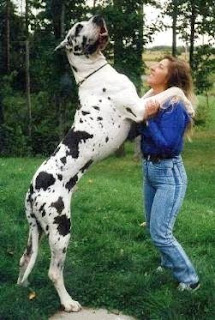At nearly every talk I give, I get a
question about how I do my research. I always explain that I usually
spend some time Googling my questions about a topic. (Sometimes I
just type in a few disjointed words. Sometimes I type in an actual
question.) The results that pop up range from fascinating to dead
ends. At each step, I think of other questions. I end up clicking
through a wide range of links, and usually I get so interested in the
topic or related topics that I learn much more than I need for a
particular part in a book.
Sometimes, after I've learned the
basics, I'll call an expert. The reason is that while you can read
enough about some subjects to become quite knowledgeable, you may
find that your writing about it, while technically correct, doesn't
have the right flavor. Talking to an actual person can make a huge
difference.
This is one of the most fun things
about writing. I track down an expert, call them up, tell them I'm
working on a new book that has a story thread about (insert subject
here: forest fires, avalanche control, autism, long-lost Mark Twain
manuscripts, weapons, art forgery, gold mining, search and rescue,
genetic engineering). You get the idea.
I've never been turned down. I assume
that's because people like to be helpful, and they probably also
welcome a break from their routine. Going out to have coffee with a
writer who wants to pick their brain is more fun than a typical
meeting at the office.
Another kind of research is exploring the arena in which you are writing. For me, this can
range from hiking and skiing and biking and sailing around
Tahoe to traveling to other cities and visiting places that might
turn up in my books. I may even explore museums that house the kind
of stuff I'm writing about. Sometimes, I poke around libraries or
businesses that intersect with my subject matter.
In sum, research is fun and enormously
interesting.
Which brings me to the most important
part of research.
You have to know when to quit.
When you've learned enough for your
purposes, it's time to stop researching and write your book.
Thorough research is critical to
getting most stories to work well. But research has caused more
writers more procrastination than anything other than email and other
internet distractions.
Learn what you need, then turn it off.
It's time to write.



